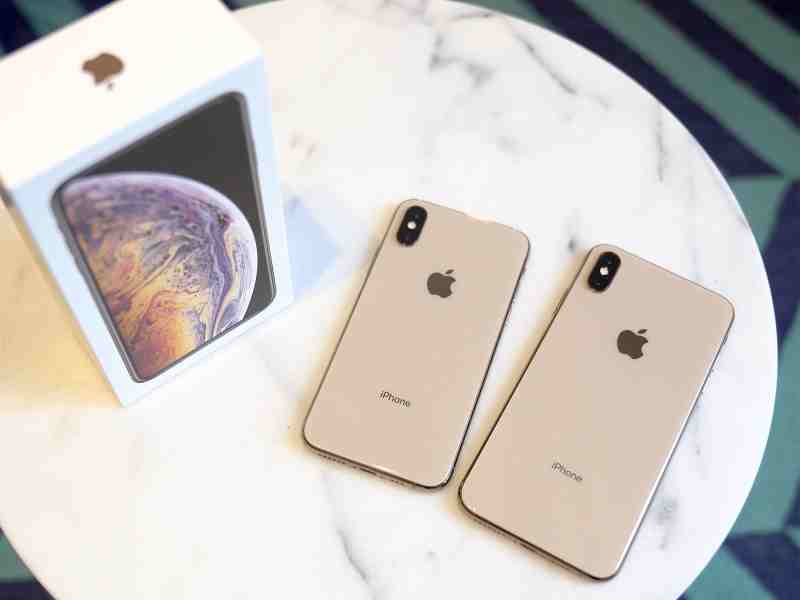New iPhone cameras make you look too beautiful!
Obviously, there is nothing wrong with people looking very beautiful, other than the sometimes undesirable attention that beauty generates. Moreover, a little enhancement here and there on your looks doesn’t sound much like a bad idea. However, many folks are complaining that the selfies they take with iPhone XS or iPhone XS Max, which are […]

Obviously, there is nothing wrong with people looking very beautiful, other than the sometimes undesirable attention that beauty generates. Moreover, a little enhancement here and there on your looks doesn’t sound much like a bad idea. However, many folks are complaining that the selfies they take with iPhone XS or iPhone XS Max, which are the new iPhones, are making them look too beautiful. People think that the camera is over-processing their faces with filters that smooth out their skins – getting rid of stuff like acne or rashes – and making their skin look clearer and nicer. How dare the iPhone make people look more attractive?
Yes, the new technologies in iPhone appear to smooth out your skin and reduce shadows and other details in photos you take with the phones’ selfie cameras. The effect is similar to the so-called “beauty mode” on some other smartphones such as Samsung and in some apps. The difference is that, whereas you can adjust or turn on/off the beauty mode (beauty filter) in these other phones, the phenomenon observed in iPhone is automatic (hard-coded) and can’t be controlled by you. (Ironically, one of the big selling features of the new iPhone XS is the 8-megapixel front-facing camera. The front-facing camera is for the selfie, whereas the backward-facing cameras are for the regular shots.)
Apple says it does not offer the beauty filter feature in iPhones, though it seems that the effects of the new photographic techniques in iPhone are similar to those of beauty filters.
According to the company, the selfie camera system on the new iPhone uses faster sensors, improved chips and “advanced algorithms” to make your photos look better with a feature called “Smart HDR.” Some users believe Apple uses the beauty filter in its cameras’ algorithms.
Is the complaint of too much beauty an overreaction? Beauty is not supposed to be such a bad thing. However, some people want their photos to look like them, “warts and all!” Actually, it is a case of “one man’s meat being another’s poison,” as some people, particularly in Asia, actually love the beauty mode feature in smartphones such as the Samsung Galaxies. Meitu, an app from China, is advertised as the most advanced way to make your photos more beautiful, and it is loved in China. FaceTune, developed in Jerusalem, is another photo-beautifying app. These apps smooth out and brighten your skin so you look a little more polished on social media.
What does Apple say? Apple traces the problem to its aggressive effort to reduce the noise from shots taken by smartphones. A serious noise problem happens when you take photos in low light, which causes little bits of grain to appear across the photo. Noise is a particular problem with smartphone cameras because they have small lenses and sensors that are not able to allow much light in as do professional rigs. Apple’s disposition centres on producing high quality cameras by improving the system’s chips to enable noise reduction in photos.
This is what the company says it does: “We set a reference frame and fuse in information from multiple frames. As you stack the frames, if you have the same image, you have lower and lower noise and better and better detail.”
Lewis Hilsenteger of Business Insider interprets this to mean that “perhaps if a photo is taken with more light, the smoothing would appear less prominent. A test run on Thursday in natural daylight did show a less pronounced smoothing effect.”
Let’s look at the great technologies, two them, behind the cameras in iPhone XS. One is HDR, or High Dynamic Range, which is a photographic technique for dealing with tricky lighting situations. As someone phrases it, when you have both bright spots and shadows in the same frame, it becomes difficult to capture a good image, as either the bright parts will lack detail or the shadowy parts will appear too dark. With Apple’s “Smart HDR,” you are able to capture great detail from dark and bright areas, to obtain brighter reflections, cleaner shadows, and you can see further into distances. The HDR will eliminate shadowy or washed out areas. Because HDR takes several different images, you can notice slowness in your camera if you are taking several photos in quick succession.
The other technology to be aware of in iPhone XS is “bokeh.” Bokeh is a Japanese language word that refers to the quality of the out-of-focus areas of a photographic image as rendered by a lens. It is the aesthetic quality of the blur produced in the out-of-focus parts of an image produced by a lens. Bokeh makes photographs visually appealing and forces us to focus our attention on a particular area of the image. It is said to be one of the most popular subjects in photography. Apple calls bokeh, the portrait mode, or the bokeh effect. Bokeh can be seen as the amount of background blur used to give an image definition. I’ll call bokeh “making nice with blurriness.”
